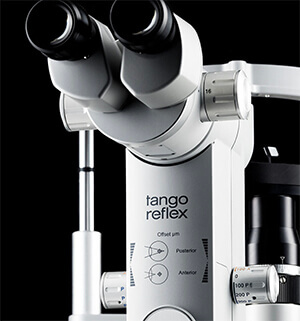Glaucoma is one of the most severe eye diseases. It can develop for years without you knowing. Then suddenly, it causes visual symptoms quickly followed by permanent vision loss.
That’s why it’s called the silent thief of sight. But, you can prevent vision loss from glaucoma with regular visits to your eye doctor.
They can track the pressure in your eyes, called intraocular pressure or IOP, over time. Without these appointments, glaucoma can develop without you knowing.
Luckily, if you have regular eye exams, your eye doctor can tell when glaucoma is developing in your eyes. Then, they can treat it.
The eye doctors at Coastal Surgical Center use MIGS, trabeculectomy, and SLT to prevent vision loss from glaucoma.
What is Glaucoma?
Glaucoma is an eye disease that causes your IOP to climb. Without medical intervention, it can lead to permanent vision loss.
High IOP can damage your optic nerve, which sends light signals from your eye to your brain. When light hits the retina in the back of your eye, it sends nerve impulses to your brain.
These nerve impulses travel down your optic nerve. When glaucoma causes your IOP to get too high, it damages your optic nerve and blocks the signals.
If the optic nerve gets damaged, there is no way to repair it, and you have vision loss. All glaucoma treatments aim to keep your optic nerve healthy by maintaining healthy IOP.
What Are MIGS?
Minimally invasive glaucoma surgery, called MIGS, is a group of medical procedures used to reduce IOP. Using a MIGS procedure to treat glaucoma has become one of the most common forms of treatment.
MIGS is a collection of related surgeries. All MIGS procedures are minimally invasive, unlike traditional or laser glaucoma surgery, which have more potential complications.
They use microscopic equipment and tiny incisions to reduce IOP. The devices that get inserted during MIGS help fluid drain from the eye.
Fluid build-up in your eyes is the reason glaucoma causes IOP to increase. It usually builds because the drainage network in your eye has a block.
When inserted, MIGS devices help open the drainage network or create a new pathway for eye fluid to drain through.
What is Trabeculectomy?
Another surgical option to reduce IOP in glaucoma patients is trabeculectomy. Trabeculectomy creates a new pathway in your drainage network.
It is an outpatient procedure performed in an operating room. Trabeculectomy is a more intense procedure than MIGS procedures are.
During a trabeculectomy, your surgeon creates a flap in the white part of your eye, called the sclera. They make this flap underneath your upper eyelid.
They create a new pathway underneath the flap, allowing fluid to flow out of your eye. The new drain lowers your IOP to prevent optic nerve damage.
What is SLT?
Selective laser trabeculectomy, or SLT, is another glaucoma treatment. It uses a special laser that gets absorbed by specific pigmented tissue in your eye.
The laser used in SLT is sometimes called a cold laser because not all tissue in your eye absorbs its light. This selectiveness limits the amount of heat your eye absorbs, making the procedure less intense.
The laser gets used on the drainage network in your eye. It creates a biochemical change in the tissue, which allows more fluid to exit. Although the effects of SLT can take one to three months to work, it does reduce IOP.
The goal of any glaucoma treatment is to reduce your IOP. Without that reduction, your optic nerve will likely sustain damage, and your vision will suffer.
But treatment is possible with timely diagnosis. The treatments we use at Coastal Surgical Center all work to reduce IOP.
We will help you determine the proper glaucoma treatment for you, depending on your situation. Schedule an appointment at Coastal Surgical Center in Portsmouth, NH to ensure your eyes are safe.





